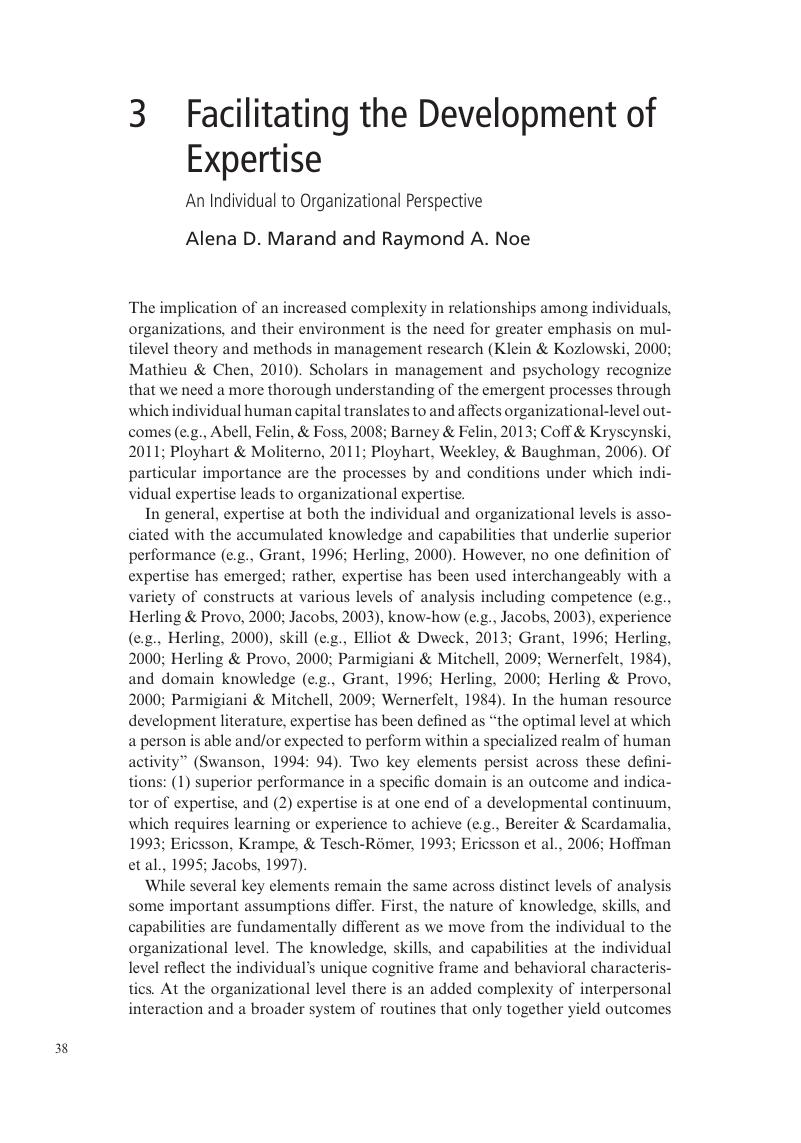Book contents
- The Cambridge Handbook of Workplace Training and Employee Development
- The Cambridge Handbook of Workplace Training and Employee Development
- Copyright page
- Dedication
- Contents
- Figures
- Tables
- Contributors
- Miscellaneous Frontmatter
- Preface
- 1 Introduction and Overview
- Part I Fundamental Issues in Learning and Transfer
- 2 Cognitive and Neural Foundations of Learning
- 3 Facilitating the Development of Expertise
- 4 Understanding Training Transfer from the Adaptive Performance Perspective
- 5 The Psychology of Learner Control in Training
- Part II Understanding the Learner
- Part III Designing the Intervention
- Part IV Special Topics
- Part V Workplace Learning from Other Lenses
- Index
- References
3 - Facilitating the Development of Expertise
An Individual to Organizational Perspective
from Part I - Fundamental Issues in Learning and Transfer
Published online by Cambridge University Press: 30 October 2017
- The Cambridge Handbook of Workplace Training and Employee Development
- The Cambridge Handbook of Workplace Training and Employee Development
- Copyright page
- Dedication
- Contents
- Figures
- Tables
- Contributors
- Miscellaneous Frontmatter
- Preface
- 1 Introduction and Overview
- Part I Fundamental Issues in Learning and Transfer
- 2 Cognitive and Neural Foundations of Learning
- 3 Facilitating the Development of Expertise
- 4 Understanding Training Transfer from the Adaptive Performance Perspective
- 5 The Psychology of Learner Control in Training
- Part II Understanding the Learner
- Part III Designing the Intervention
- Part IV Special Topics
- Part V Workplace Learning from Other Lenses
- Index
- References
Summary

Information
- Type
- Chapter
- Information
- Publisher: Cambridge University PressPrint publication year: 2017
References
Accessibility standard: Unknown
Why this information is here
This section outlines the accessibility features of this content - including support for screen readers, full keyboard navigation and high-contrast display options. This may not be relevant for you.Accessibility Information
- 4
- Cited by
